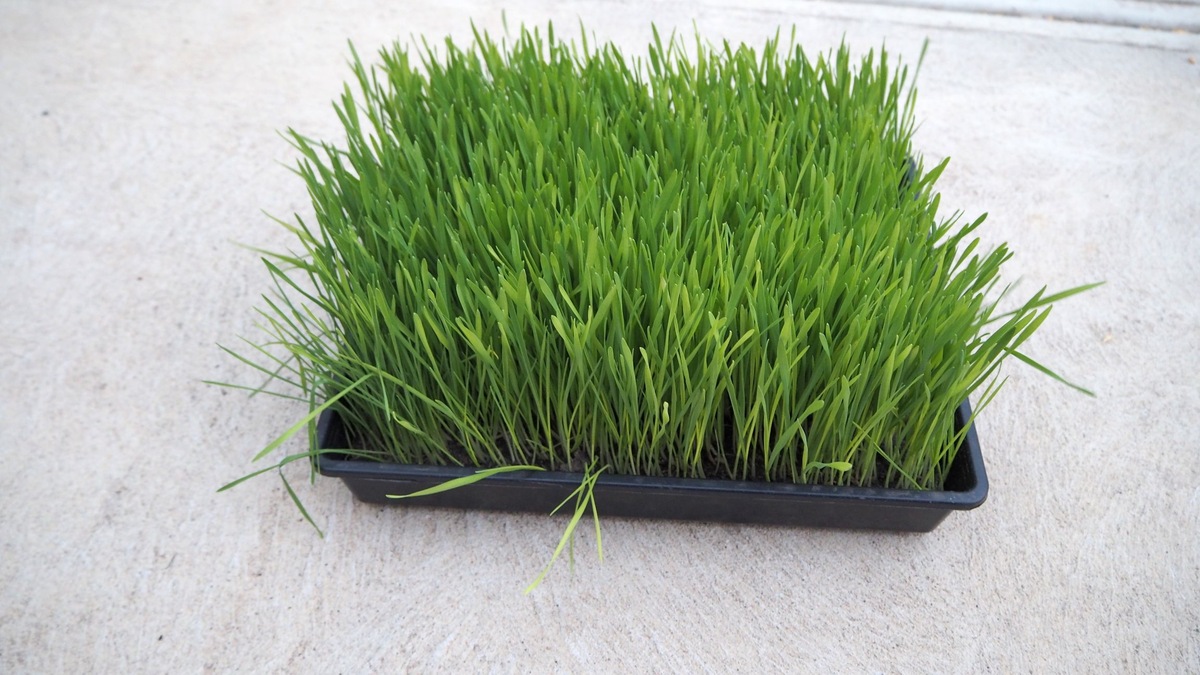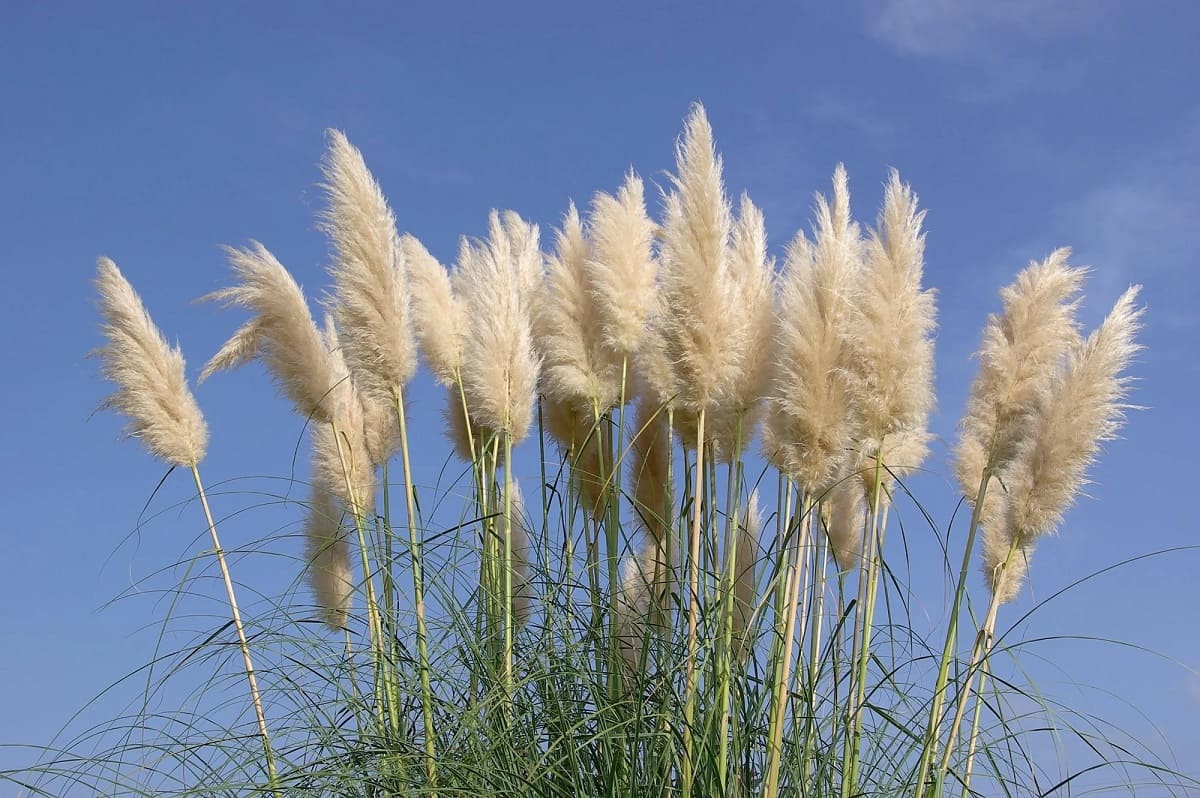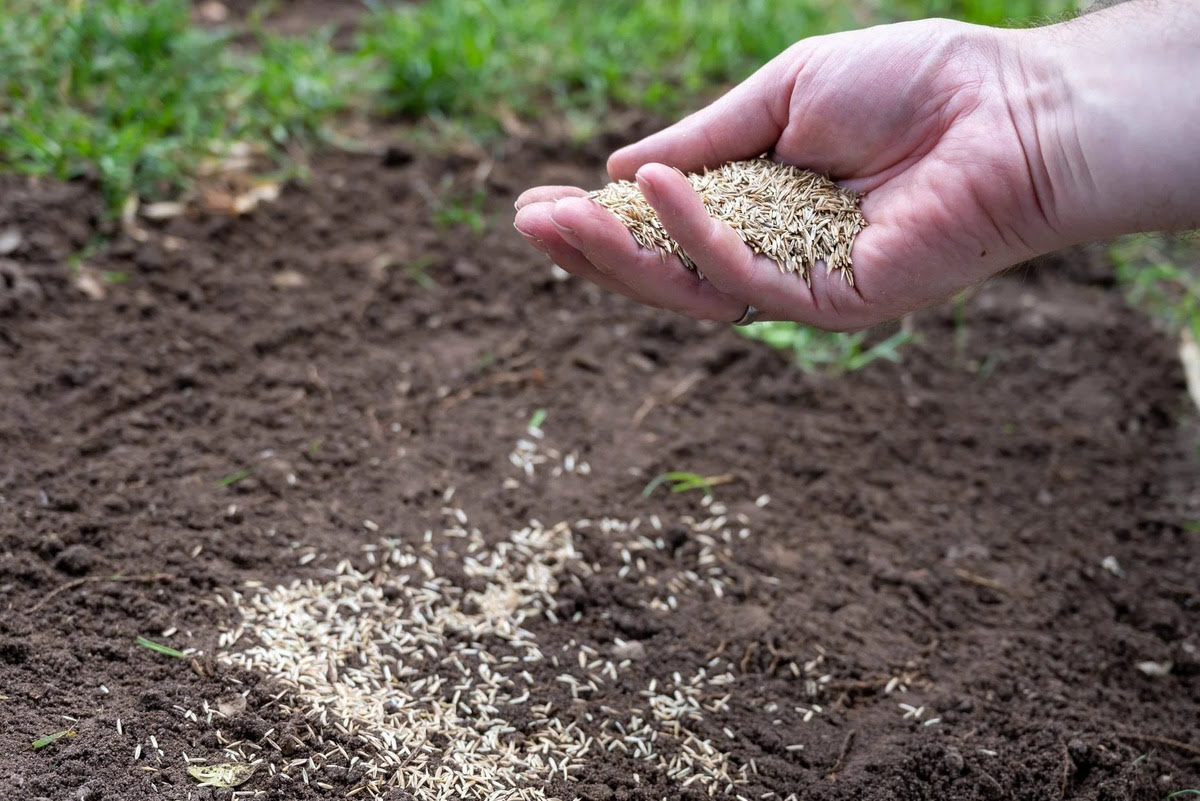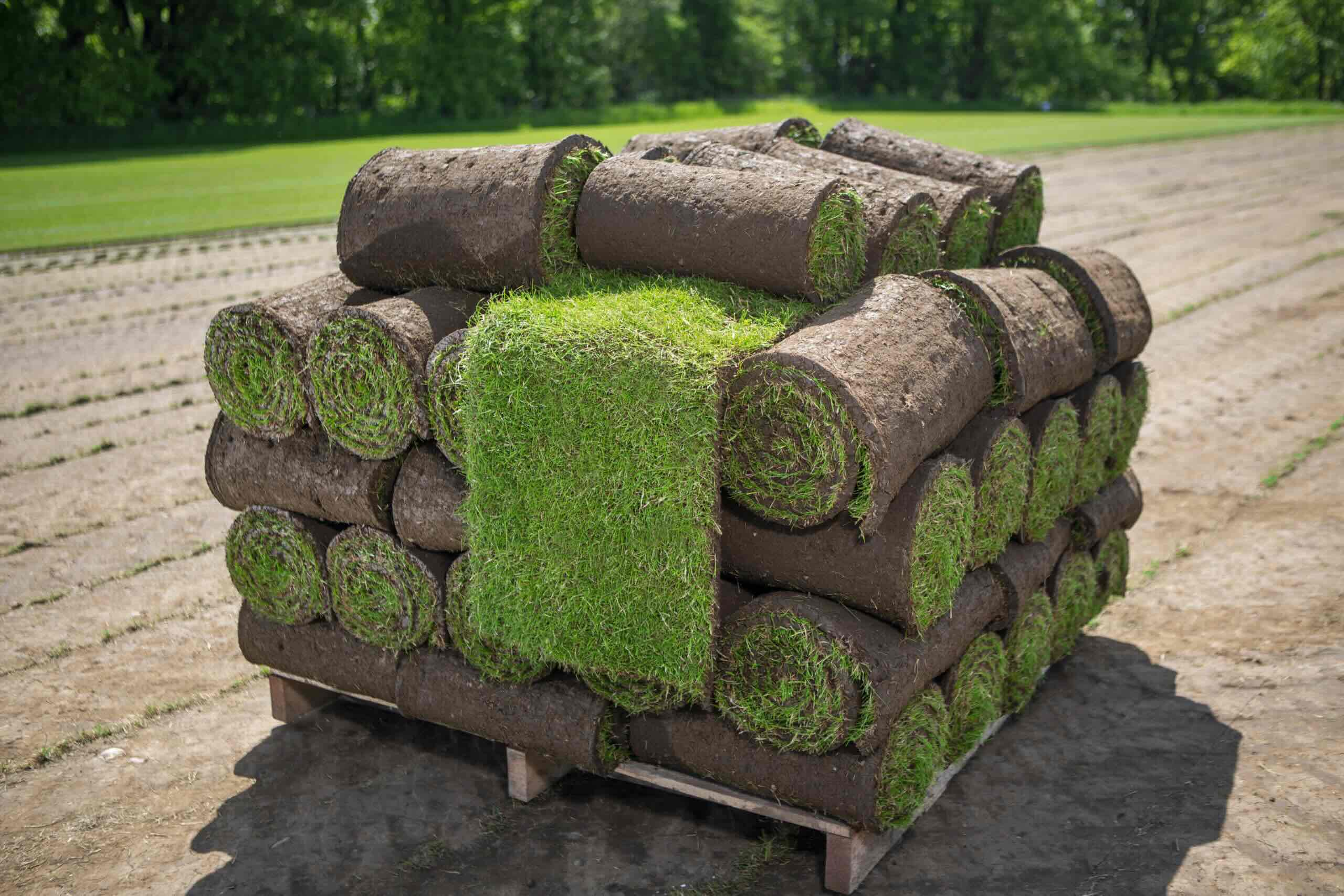Home>Gardening & Outdoor>Landscaping Ideas>How To Plant Feather Reed Grass


Landscaping Ideas
How To Plant Feather Reed Grass
Published: January 26, 2024
Learn how to plant feather reed grass and enhance your landscaping with our expert tips and ideas. Create a stunning outdoor space with our landscaping ideas.
(Many of the links in this article redirect to a specific reviewed product. Your purchase of these products through affiliate links helps to generate commission for Storables.com, at no extra cost. Learn more)
Introduction
Feather reed grass, scientifically known as Calamagrostis x acutiflora, is a stunning ornamental grass that can add elegance and texture to any landscape. With its upright growth habit and feathery plumes, this grass is a popular choice for gardens, borders, and even large containers. Its versatility and low maintenance requirements make it a favorite among gardeners and landscapers alike.
This article will guide you through the process of planting feather reed grass, from selecting the ideal location to ensuring proper care and maintenance. Whether you're a seasoned gardener or a novice enthusiast, cultivating this graceful grass can be a rewarding experience. By following these steps, you can create a picturesque and thriving display of feather reed grass in your outdoor space.
Feather reed grass is known for its adaptability to various soil types and its ability to withstand harsh weather conditions, making it an excellent choice for both residential and commercial landscapes. Its narrow, upright foliage provides a vertical element to garden designs, while its feathery flower heads add movement and visual interest. Whether used as a focal point, a border plant, or a mass planting, feather reed grass can elevate the aesthetic appeal of any outdoor setting.
In the following sections, we will delve into the essential steps for successfully planting and caring for feather reed grass. From selecting the right location to understanding the watering and maintenance needs, this comprehensive guide will equip you with the knowledge and confidence to cultivate a thriving stand of feather reed grass in your garden. So, let's embark on this horticultural journey and unlock the secrets to growing and enjoying the beauty of feather reed grass.
Key Takeaways:
- Planting feather reed grass adds elegance and texture to any landscape. Choose a sunny to partially shaded spot with well-drained soil, and provide regular watering and annual fertilization for a thriving display.
- Feather reed grass is low maintenance and adaptable to various climates. Plant it in spring or fall, and prune in late winter to maintain its beauty and grace in your outdoor space.
Read more: When To Plant Mexican Feather Grass
Step 1: Choose the Right Location
Selecting the ideal location for planting feather reed grass is crucial for its long-term health and visual impact. This ornamental grass thrives in a variety of conditions, but certain factors can optimize its growth and overall appearance. Here's how to choose the right location for your feather reed grass:
-
Sunlight: Feather reed grass flourishes in full sun to partial shade. When choosing a location, prioritize spots that receive at least six hours of sunlight per day. In regions with scorching summers, providing some afternoon shade can prevent the grass from wilting. Conversely, in cooler climates, ample sunlight exposure is essential for robust growth and prolific flowering.
-
Soil Quality: While feather reed grass is adaptable to different soil types, it prefers moist, well-drained soil. When scouting for a planting site, assess the soil's drainage capacity. Avoid waterlogged areas, as excessive moisture can lead to root rot. Loamy or sandy soils with good drainage are ideal for promoting healthy root development and preventing water stagnation.
-
Space and Air Circulation: Consider the mature size of feather reed grass when choosing its location. This grass typically reaches a height of 4 to 6 feet, with a spread of 2 to 3 feet. To accommodate its growth and ensure proper air circulation, select a site with ample space around the plant. Avoid overcrowded areas where the grass may become overshadowed or restricted in its growth.
-
Landscape Design: Evaluate your landscape's design and identify areas where the vertical structure and graceful movement of feather reed grass can make a significant visual impact. Whether used as a standalone specimen, a backdrop for flowering perennials, or a border plant along walkways, this grass can enhance the overall aesthetic appeal of your garden.
-
Climate Considerations: Take into account the local climate and weather patterns when choosing the location. Feather reed grass is known for its resilience in various climates, but it may require additional care in extreme conditions. In regions with intense heat, selecting a partially shaded spot can prevent the grass from becoming stressed. Conversely, in cooler climates, maximizing sunlight exposure can promote vigorous growth and abundant flowering.
By carefully considering these factors, you can identify the perfect spot to plant feather reed grass, ensuring that it thrives and contributes to the beauty of your landscape. With the right location secured, you can proceed to prepare the soil and embark on the next steps of the planting process.
Step 2: Prepare the Soil
Preparing the soil is a crucial step in the successful cultivation of feather reed grass. By creating an optimal growing environment, you can ensure that the grass establishes strong roots and exhibits vigorous growth. Here's a detailed guide on how to prepare the soil for planting feather reed grass:
Soil Assessment:
Before initiating any soil preparation, it's essential to assess the soil conditions in the chosen planting area. Conduct a simple soil test to determine its pH level and nutrient content. Feather reed grass thrives in slightly acidic to neutral soil with a pH range of 5.5 to 7.0. Additionally, the soil should be rich in organic matter to support the grass's nutritional needs.
Soil Amendment:
Based on the soil assessment results, amend the soil as needed to create an ideal growing medium for feather reed grass. If the pH level is outside the recommended range, adjust it by incorporating lime to raise the pH or elemental sulfur to lower it. Additionally, enrich the soil with organic matter such as compost or well-rotted manure to improve its structure and fertility.
Read more: What To Plant With Mexican Feather Grass
Soil Cultivation:
Once amendments are applied, cultivate the soil to ensure proper incorporation of the added materials. Use a garden fork or a tiller to work the amendments into the soil to a depth of 6 to 8 inches. This process facilitates the blending of organic matter and pH-adjusting agents, promoting uniform distribution and enhancing the soil's overall quality.
Weed Removal:
Before planting feather reed grass, thoroughly remove any existing weeds or unwanted vegetation from the planting area. Weeds can compete with the grass for nutrients and moisture, hindering its establishment and growth. By clearing the area of weeds, you create a clean and favorable environment for the grass to take root and thrive.
Soil Moisture:
Prior to planting, ensure that the soil is adequately moist but not waterlogged. Proper soil moisture is essential for the initial establishment of feather reed grass. If the soil is excessively dry, thoroughly water the area a day or two before planting to provide an optimal moisture level for the grass's roots to settle in and begin their growth journey.
By diligently preparing the soil according to these guidelines, you can create an inviting and nourishing foundation for planting feather reed grass. This proactive approach sets the stage for the grass to flourish and adorn your landscape with its graceful presence. With the soil meticulously prepared, you are now ready to proceed with the next phase of the planting process.
Step 3: Planting Feather Reed Grass
Planting feather reed grass is a pivotal step in bringing this elegant ornamental grass to life in your landscape. By following the proper planting guidelines, you can ensure the successful establishment of this graceful grass and set the stage for its long-term growth and beauty.
Read more: How Fast Does Mexican Feather Grass Grow
Planting Procedure:
-
Digging the Hole: Begin by digging a hole for the grass that is twice as wide as the root ball and of equal depth. This provides ample space for the roots to spread out and establish themselves in the soil.
-
Positioning the Grass: Gently remove the feather reed grass from its container and position it in the center of the prepared hole. Ensure that the top of the root ball is level with the surrounding soil surface.
-
Backfilling: Once the grass is positioned correctly, backfill the hole with the excavated soil. Tamp the soil gently around the base of the grass to remove air pockets and provide stability.
-
Watering: After planting, thoroughly water the grass to settle the soil around the roots and initiate the establishment process. Adequate moisture is crucial in the initial stages to support the grass as it acclimates to its new environment.
-
Mulching: Apply a layer of organic mulch, such as wood chips or shredded bark, around the base of the grass. Mulch helps retain soil moisture, suppresses weed growth, and regulates soil temperature, creating favorable conditions for the grass to thrive.
Planting Tips:
-
Spacing: When planting multiple feather reed grasses, ensure proper spacing between each plant to allow for their mature size and prevent overcrowding. Typically, spacing the grasses 2 to 3 feet apart is recommended.
-
Planting Depth: It's crucial to plant the grass at the correct depth to promote healthy growth. Ensuring that the top of the root ball is level with the surrounding soil surface prevents issues such as root suffocation or exposure.
-
Seasonal Considerations: While feather reed grass can be planted in spring or fall, the latter is often preferred as it allows the grass to establish its root system before the onset of harsh winter conditions.
By following these planting guidelines and tips, you can introduce feather reed grass to your landscape with confidence, knowing that you have provided it with the best possible start. With the grass securely planted, you can now focus on the essential steps for its ongoing care and maintenance, ensuring that it thrives and enhances the beauty of your outdoor space.
Step 4: Watering and Maintenance
Proper watering and maintenance are essential for nurturing healthy and vibrant feather reed grass. By implementing a consistent care regimen, you can ensure that the grass thrives and continues to enhance the visual appeal of your landscape. Here's a comprehensive guide to watering and maintaining feather reed grass:
Watering Guidelines:
Feather reed grass requires regular watering, especially during its initial establishment phase. Once planted, provide ample water to the grass to support root development and acclimatization to its new environment. Water deeply, ensuring that the soil is moist but not waterlogged. As a general rule, aim to provide around 1 inch of water per week, either through rainfall or supplemental irrigation. During periods of drought or extreme heat, increase the frequency of watering to prevent the soil from drying out.
Read more: How Big Does Mexican Feather Grass Get
Seasonal Considerations:
Adjust the watering frequency based on seasonal changes and weather conditions. In hot and dry climates, the grass may require more frequent watering to maintain adequate moisture levels. Conversely, during cooler and wetter periods, reduce the watering frequency to prevent waterlogging and potential root issues. Observing the grass's response to environmental conditions can help fine-tune the watering schedule for optimal growth and health.
Fertilization:
Feather reed grass benefits from an annual application of balanced fertilizer in early spring. Choose a slow-release fertilizer specifically formulated for ornamental grasses and apply it according to the manufacturer's instructions. Fertilization provides the grass with essential nutrients, promoting robust growth and enhancing its overall vigor and appearance.
Pruning and Grooming:
In late winter or early spring, prune feather reed grass to remove any dead or damaged foliage from the previous growing season. Use sharp garden shears or hedge trimmers to cut the grass back to a height of 4 to 6 inches above the ground. This rejuvenation pruning encourages fresh growth and maintains the grass's tidy appearance. Additionally, remove any spent flower heads to promote a neat and well-groomed aesthetic.
Division:
Over time, feather reed grass may benefit from division to rejuvenate its growth and prevent overcrowding. Every few years, typically in early spring, carefully dig up the grass clumps and divide them into smaller sections using a sharp spade or garden knife. Replant the divided sections in prepared soil, ensuring adequate spacing between the new plants. Division helps maintain the grass's vigor and prevents it from becoming congested, promoting healthy growth and longevity.
Read more: What Is Reeded Glass
Pest and Disease Management:
Monitor the grass for signs of pests or diseases, such as aphids, rust, or leaf spot. Address any issues promptly by employing appropriate pest control measures or disease management strategies. Regular inspection and proactive intervention can help safeguard the grass from potential threats and ensure its continued well-being.
By adhering to these watering and maintenance guidelines, you can foster the optimal growth and beauty of feather reed grass in your landscape. Consistent care and attention will reward you with a flourishing display of this graceful ornamental grass, enriching your outdoor environment with its timeless allure and natural elegance.
Conclusion
In conclusion, planting feather reed grass can be a gratifying endeavor that adds a touch of sophistication and natural beauty to any outdoor space. By carefully selecting the right location, preparing the soil, and following the proper planting and maintenance techniques, you can cultivate a stunning display of this graceful ornamental grass. The versatility and resilience of feather reed grass make it a valuable addition to a variety of landscape designs, from formal gardens to contemporary urban settings.
As you embark on your journey to plant feather reed grass, remember that attention to detail and thoughtful consideration of the grass's needs are key to its successful establishment and long-term vitality. Whether you're creating a new garden bed, enhancing an existing landscape, or adding visual interest to a commercial property, the presence of feather reed grass can elevate the overall aesthetic appeal and contribute to a harmonious outdoor environment.
Furthermore, the low maintenance requirements of feather reed grass make it an attractive choice for both experienced gardeners and those new to horticulture. Its adaptability to different soil types and climates, coupled with its minimal pruning and grooming needs, make it a hassle-free yet impactful landscaping element. With proper care and attention to watering, fertilization, and occasional division, you can enjoy the enduring beauty of feather reed grass throughout the seasons.
In essence, the process of planting and nurturing feather reed grass is a rewarding journey that allows you to connect with nature and create a visually captivating outdoor retreat. The graceful form, swaying plumes, and year-round appeal of this ornamental grass make it a timeless addition to any landscape, enriching the surroundings with its understated elegance.
As you witness the graceful sway of feather reed grass in the gentle breeze and observe its subtle changes throughout the seasons, you'll appreciate the artistry and tranquility it brings to your outdoor sanctuary. So, embrace the opportunity to cultivate this remarkable grass, and let its enduring charm become an integral part of your landscape, inspiring admiration and delight for years to come.
Frequently Asked Questions about How To Plant Feather Reed Grass
Was this page helpful?
At Storables.com, we guarantee accurate and reliable information. Our content, validated by Expert Board Contributors, is crafted following stringent Editorial Policies. We're committed to providing you with well-researched, expert-backed insights for all your informational needs.












0 thoughts on “How To Plant Feather Reed Grass”